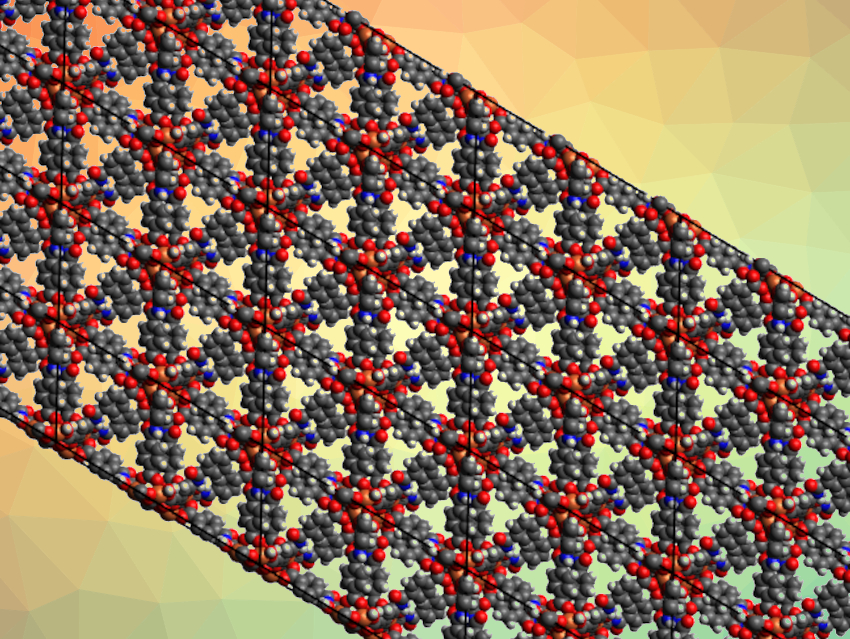Metal–organic frameworks (MOFs) are crystalline, porous materials composed of metal centers and organic linkers. They have applications, e.g., in catalysis or gas separation. Acetylene (C2H2) gas, for example, serves as an important feedstock in the chemical industry. It often needs to be separated from impurities such as ethylene or carbon dioxide. However, these compounds can be difficult to separate using porous materials due to their similar sizes and physical properties. Tailoring the properties of MOFs could help to provide good separation efficiencies for the purification of acetylene.
Ying Wang, Quan-Guo Zhai, Shaanxi Normal University, Xi’an, China, and colleagues have combined open metal sites (Fe or Sc) and Lewis basic sites in robust MOFs that can be used for C2H2 purification. The team prepared two isostructural MOFs, called SNNU-37(Fe/Sc), which consist of amide-functionalized tricarboxylate linkers and trinuclear metal clusters of the type [M3O(COO)6]. The MOFs were prepared from FeCl2·4 H2O or Sc(NO3)3·6 H2O and 5-(4-carboxybenzoylamino)isophthalic acid.
According to the researchers, the open Fe/Sc sites and the amide groups on the pore surfaces of the MOFs work in tandem to improve the acetylene adsorption performance. The acetylene adsorption capacities of the materials are much higher than those for ethylene and carbon dioxide. SNNU-37(Fe), in particular, might be able to effectively separate C2H2/C2H4 and C2H2/CO2 under ambient conditions.
- Amide-Functionalized Metal–Organic Frameworks Coupled with Open Fe/Sc Sites for Efficient Acetylene Purification,
Shu-Cong Fan, Yun-Tong Li, Ying Wang, Jia-Wen Wang, Ying-Ying Xue, Hai-Peng Li, Shu-Ni Li, Quan-Guo Zhai,
Inorg. Chem. 2021.
https://doi.org/10.1021/acs.inorgchem.1c03044



